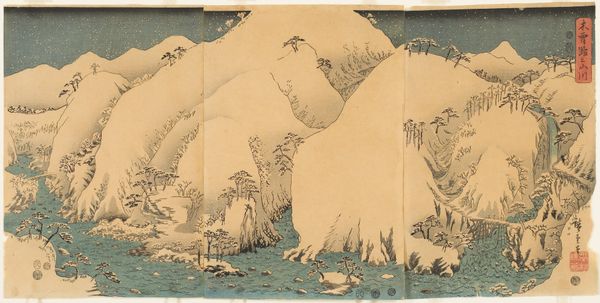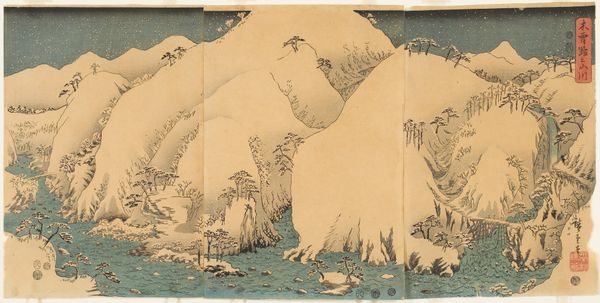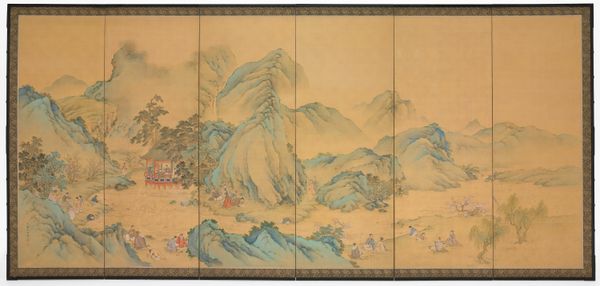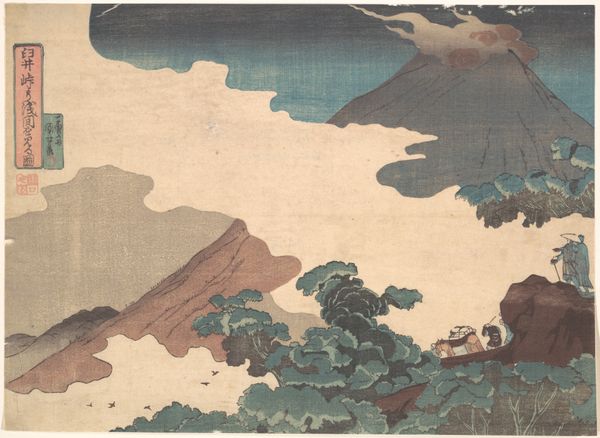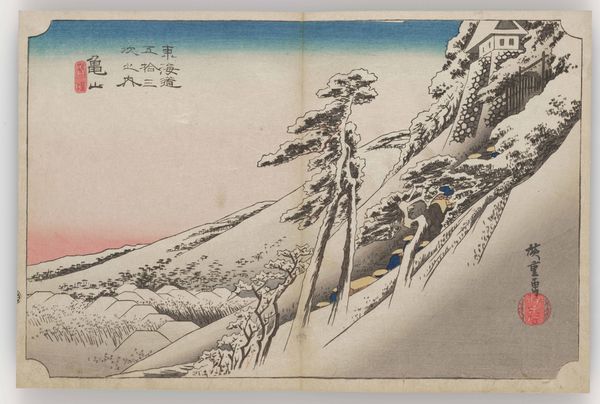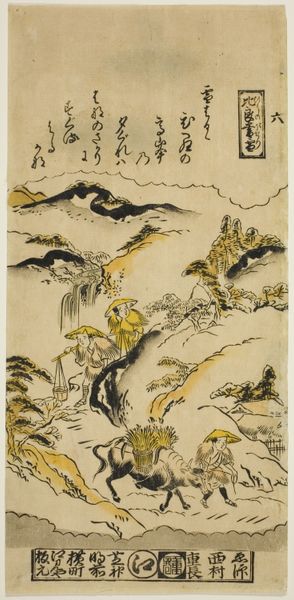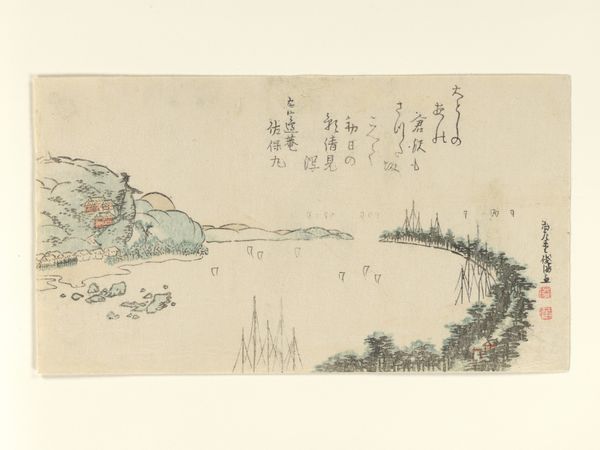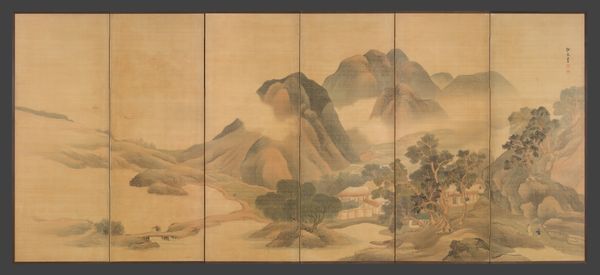
Mountain River on the Kiso Road Possibly 1857 - 1858
0:00
0:00
print, ink, woodblock-print
#
ink painting
# print
#
asian-art
#
landscape
#
ukiyo-e
#
ink
#
woodblock-print
#
orientalism
#
watercolor
Dimensions: 14 3/16 × 9 7/8 in. (36 × 25.1 cm) (image, vertical ōban)
Copyright: Public Domain
Curator: Before us hangs "Mountain River on the Kiso Road," a woodblock print possibly dating from 1857-1858, by Utagawa Hiroshige, and currently residing at the Minneapolis Institute of Art. Editor: The first thing that strikes me is the incredible sense of quiet. Despite the vastness of the snowy landscape, there's an intimacy in the way the river winds and those little pines cling to the mountainside. The colour palette feels so restrained yet dynamic. Curator: Indeed. Hiroshige was a master of ukiyo-e, or "pictures of the floating world." His landscapes weren't just about pretty scenery; they captured the everyday life and journeys of people in Edo-period Japan, framed within the complex politics of image creation and dissemination of the era. These prints were, in effect, carefully curated visual products aimed at particular social groups and marketplaces. Editor: Absolutely, and it’s important to acknowledge the physical labour involved. We’re talking about complex wood carving and printing techniques that often involved entire workshops. Each print, potentially part of a large run, carries evidence of that collective material effort, a sort of pre-industrial mass production using craft processes. The grain of the wood is almost present in the image itself. Curator: Precisely. And that connection to everyday life extended beyond the production process to the content. The Kiso Road was part of a network of highways connecting Edo – modern Tokyo – with other regions. Hiroshige’s prints of these routes catered to a burgeoning tourist culture and served as both souvenirs and representations of the Shogunates efforts to control culture. Editor: You see it almost as propaganda! For me the power is in the treatment of the landscape itself. The materials used to create that specific shade of blue in the river, for example – what were they, where did they come from? Knowing more about those raw materials tells us more about international trade, about networks of supply and demand during the period. That makes the appreciation deeper. Curator: I find myself agreeing with that more grounded take; while recognizing that, it's impossible to disregard the complex social networks they tap into, influencing aesthetic perceptions to our modern world. Editor: A beautiful convergence point to reflect on! Thanks.
Comments
No comments
Be the first to comment and join the conversation on the ultimate creative platform.
